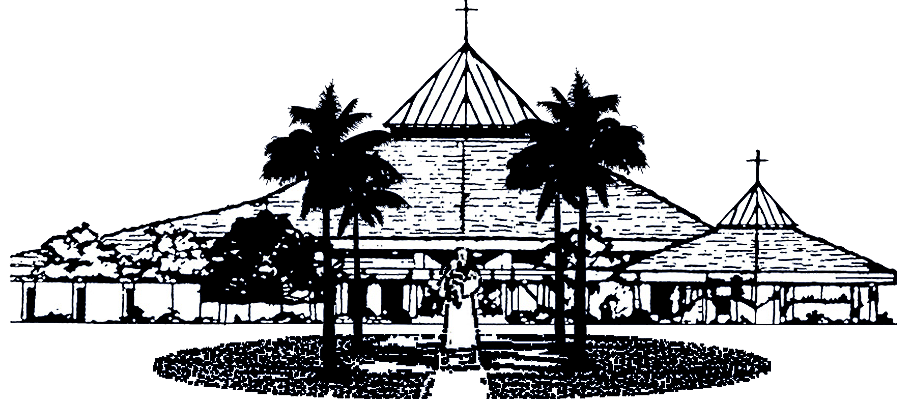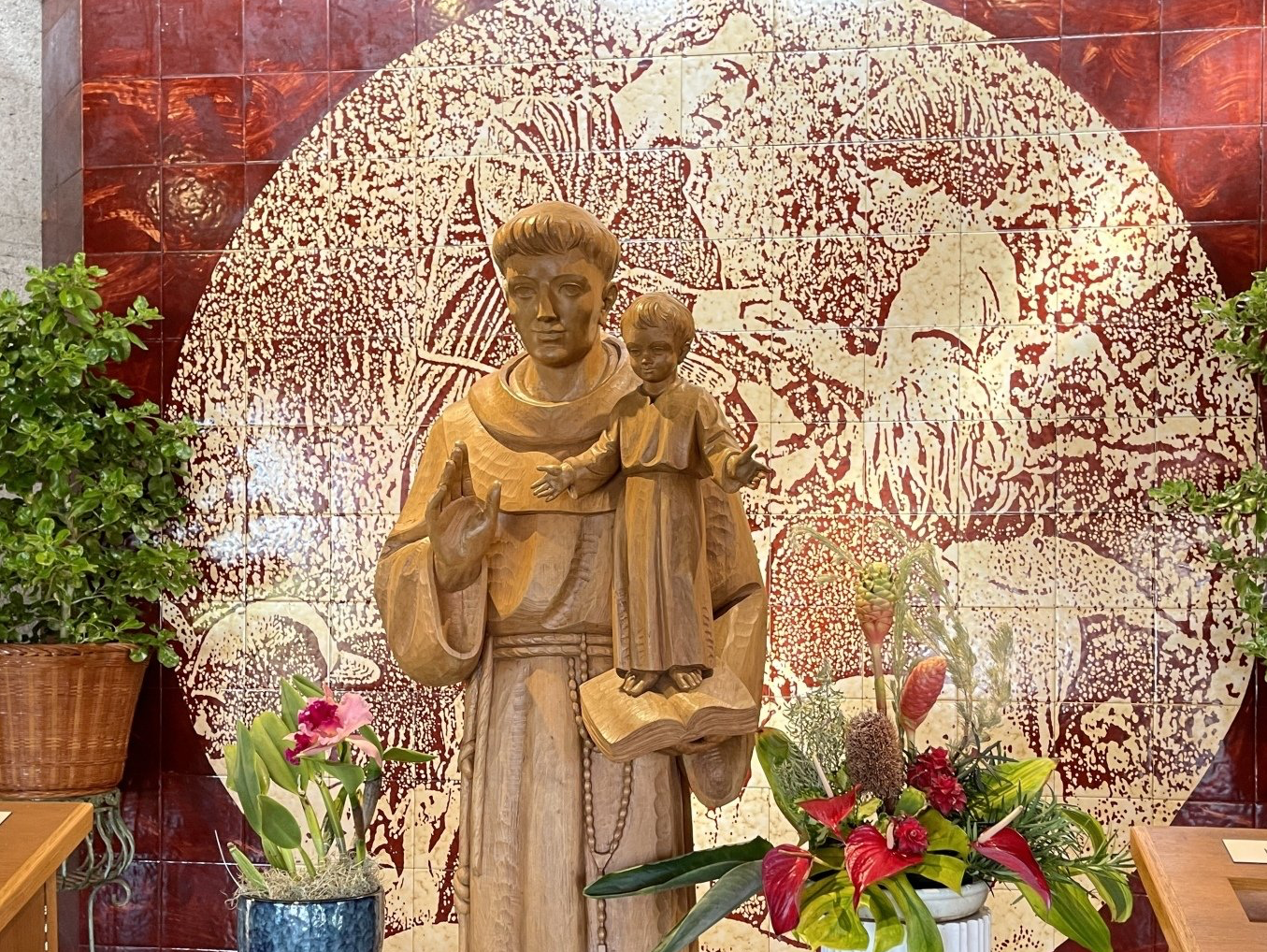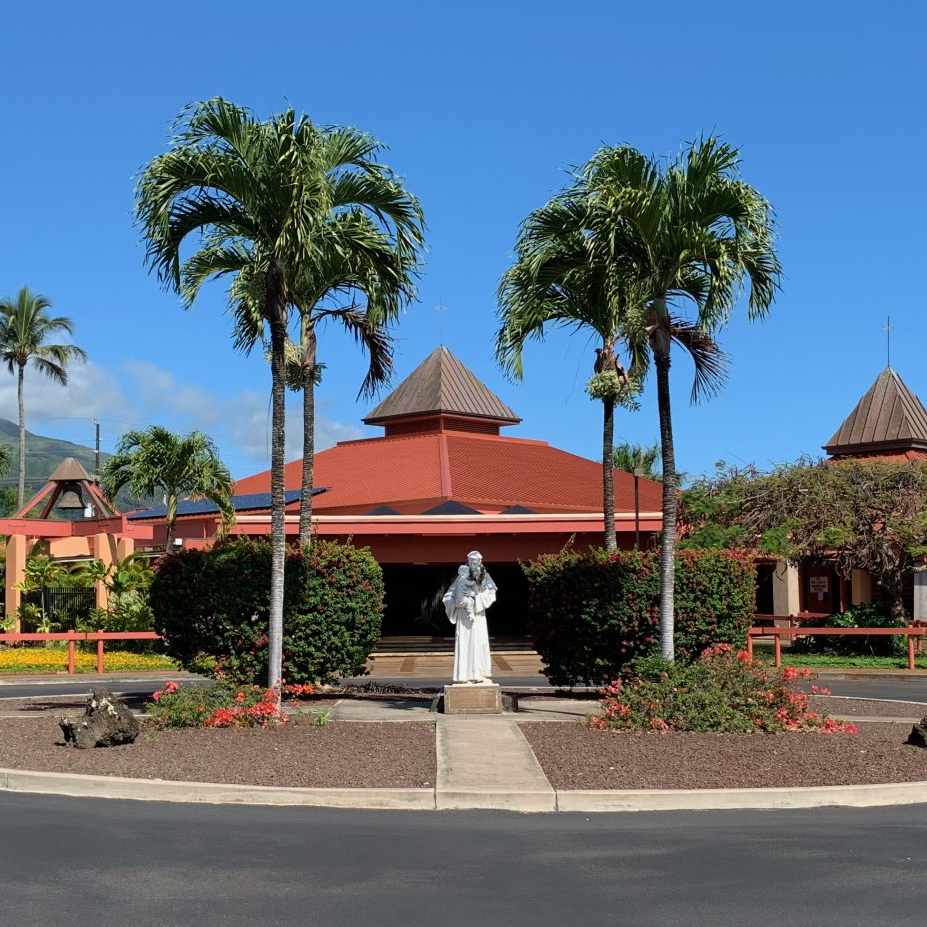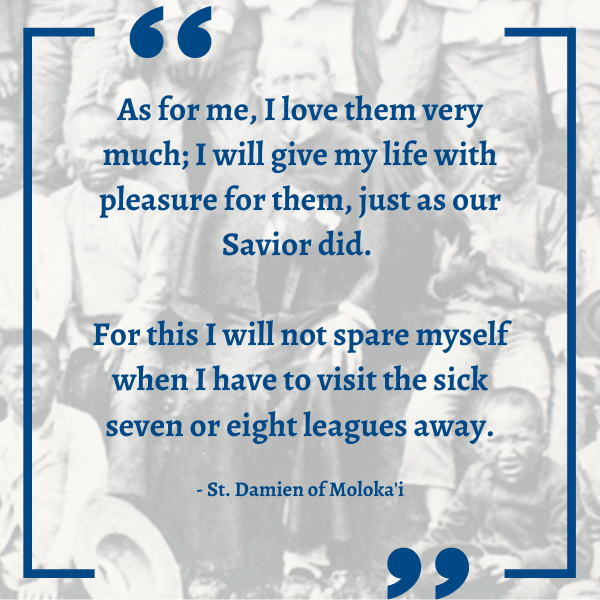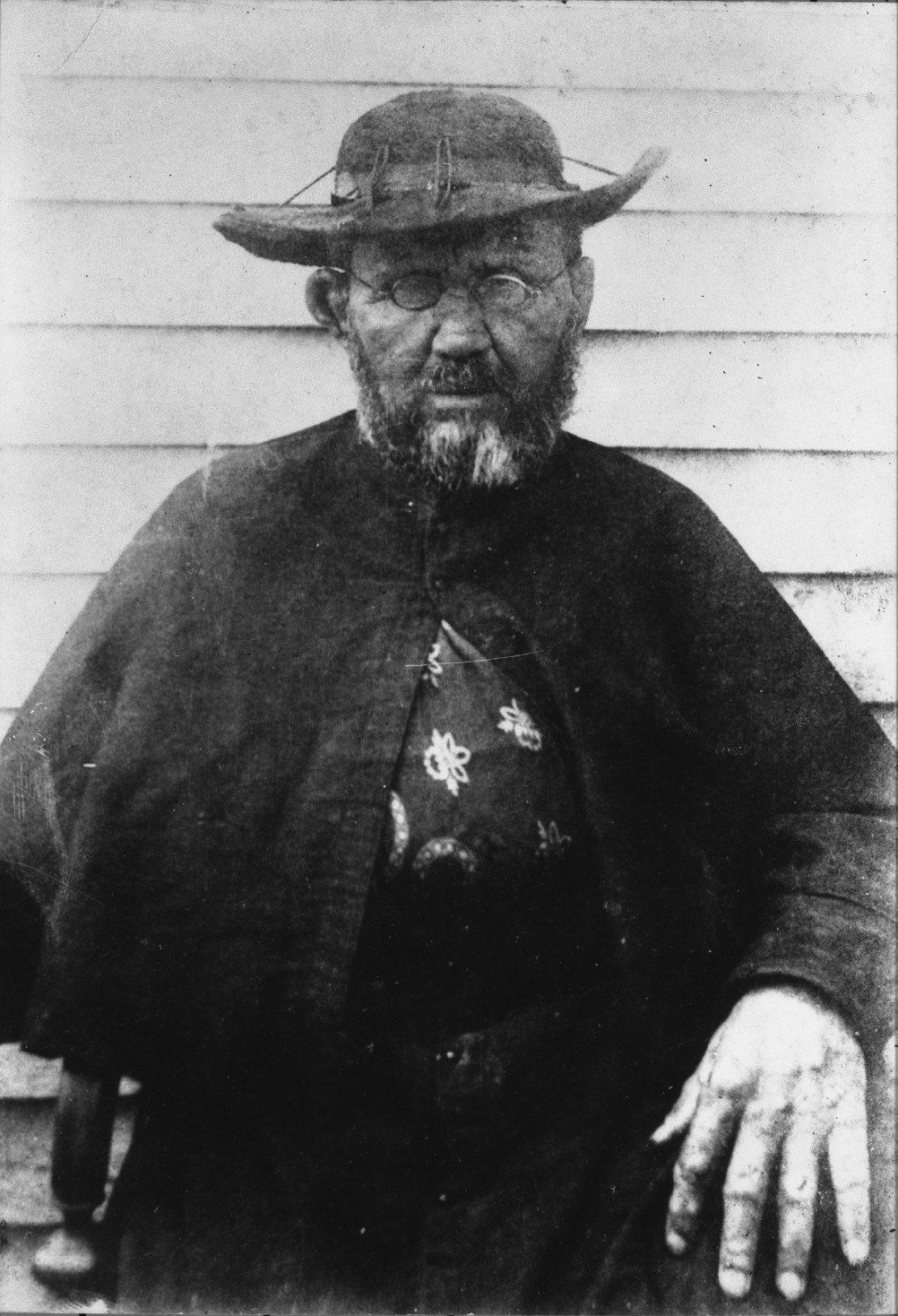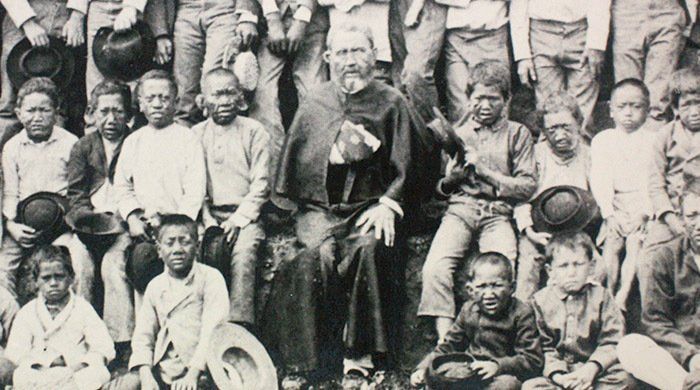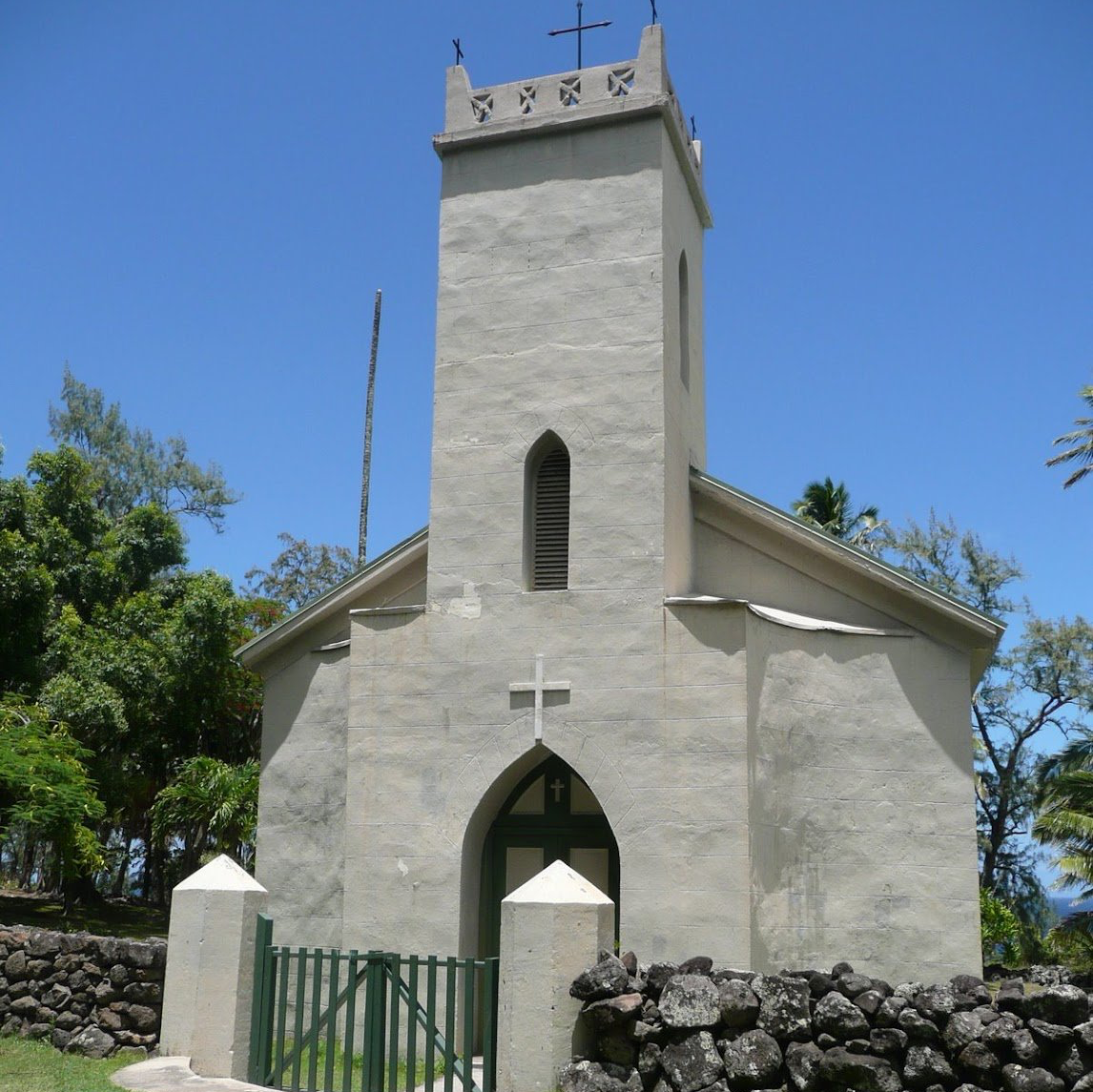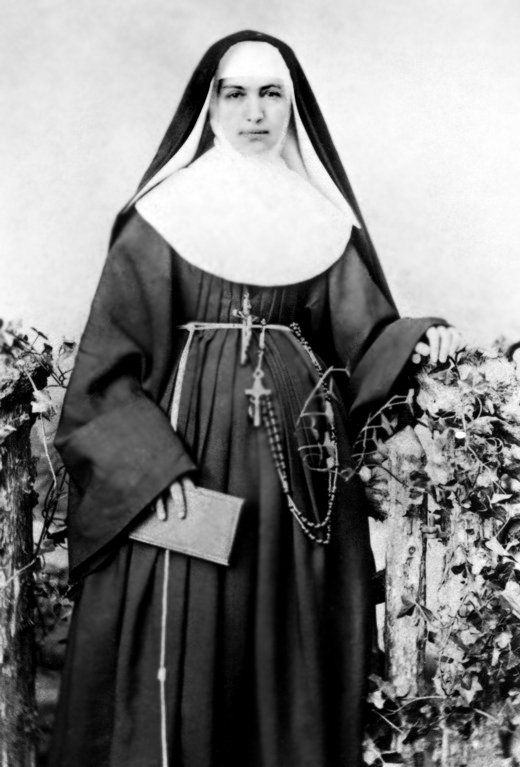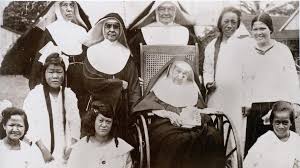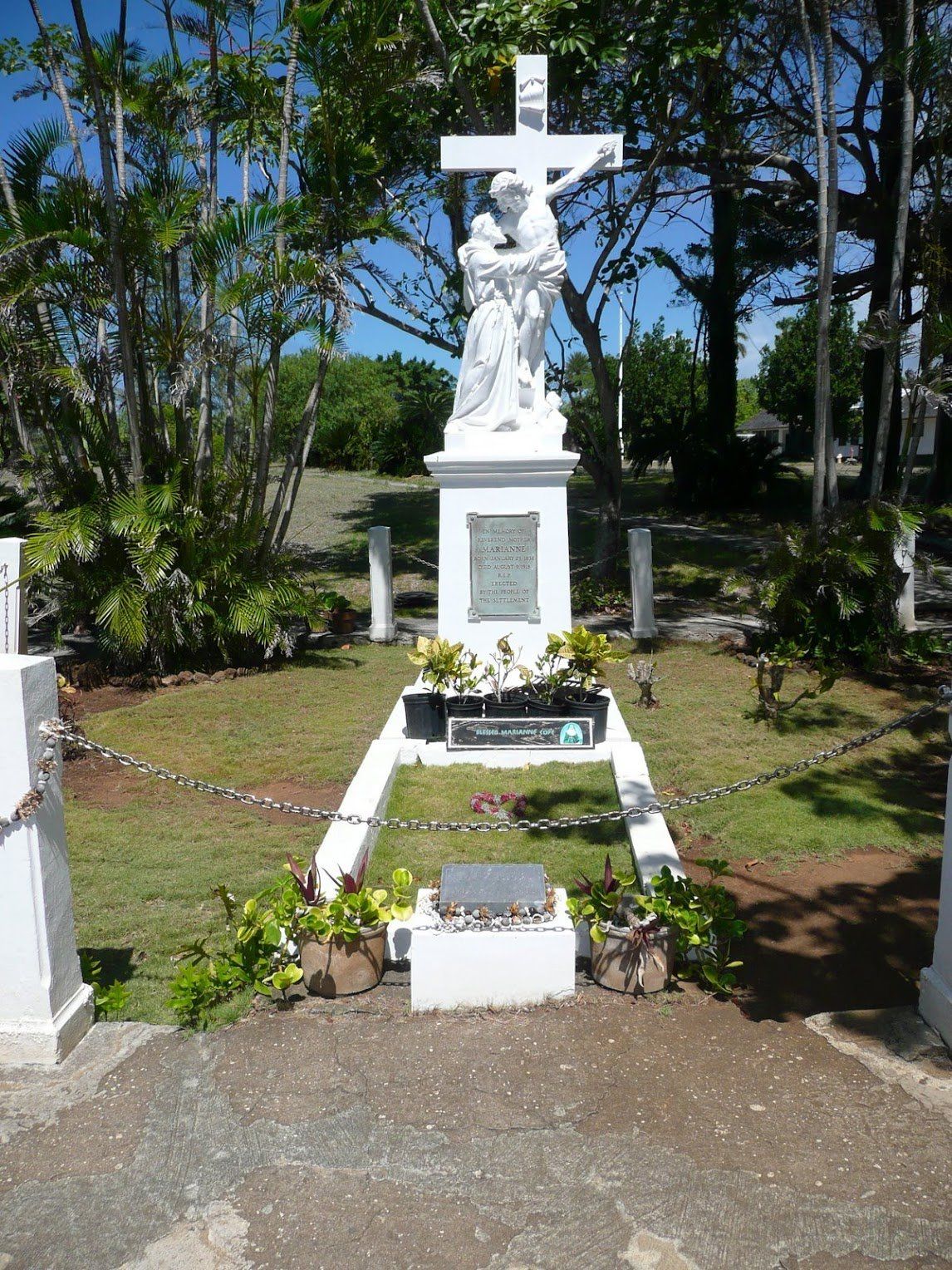The Saints of
St. Anthony Catholic Church
Wailuku, Maui
St. Anthony of Padua is the patron saint of the St. Anthony of Padua Church in Wailuku, Maui, Hawai'i. St. Anthony was established by the Fathers of the Order of the Sacred Heart of Jesus, whose arrival from France on July 7, 1827, marked the start of the Catholic Mission in Hawaii. They commissioned the church "St. Anthony of Padua" on July 13, 1848.
St. Anthony Church has been blessed to have had the physical presence of two saints on its campus: St. Damien of Moloka'i and St. Marianne Cope.
On May 4, 1873, many priests traveled to Maui for the dedication of St. Anthony Church in Wailuku. Priests came from the various islands of Hawaii to greet their bishop, Bishop Louis Maigret. Among these priests was Father Damien. On this occasion, Bishop Maigret expressed his wish for someone to make a visit to the Catholics of Moloka’i. Four priests volunteered to take turns ministering there and Father Damien was the first to go.
In 1883, Mother Marianne answered the desperate plea from the Hawaiian government for religious nursing sisters, a request already turned down by dozens of other religious communities. She accepted the mission, even when she learned she was to care mainly for leprosy patients. In 1884 she opened Malulani Hospital and began managing St. Anthony School. In 1888, she moved to Kalaupapa and cared for leprosy patients, including Father Damien.
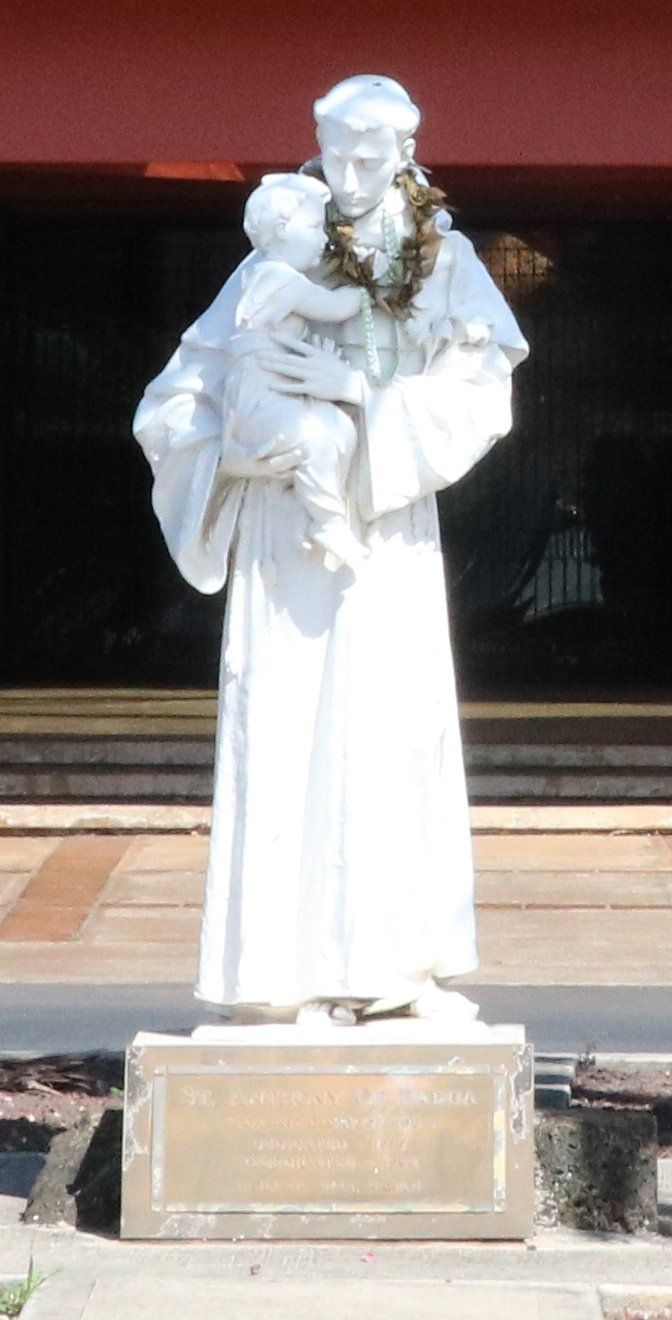
St. Anthony of Padua
Saint Anthony of Padua was born in Lisbon, Portugal on August 15, 1195. He came from a wealthy family who did not support his desire to enter into religious life. He became a Franciscan friar in 1221 and joined the order in hopes of spreading God's Word to the people of Morocco in spite of facing a possible martyr's death.
Instead, he became a respected teacher and brilliant orator who gained fame for his miracles. He was a holy man who had apparitions of the Infant Jesus and of St. Francis of Assisi. This is why he is often depicted holding the baby Jesus in his arms.
He is a patron saint of the poor and oppressed and is often invoked as a finder of "lost articles and missing persons". He died in Padua, Italy on June 13, 1231, at the age of 36 and was canonized a saint less than a year later. He was declared a Doctor of the Church by Pope Pius XII in 1946.
Our History
St. Anthony of Padua Church in Wailuku, Maui, Hawaii was established by the Fathers of the Order of the Sacred Heart of Jesus, whose arrival from France on July 7, 1827, marked the start of the Catholic Mission in Hawaii. After more than two decades of political and social upheaval as well as religious persecution, the first High Mass was celebrated at St. Anthony in Wailuku on July 13, 1848, in a thatched structure.
(Read More about St. Anthony of Padua, Maui)
A Prayer to St. Anthony of Padua, the Wonder Worker
St. Anthony of Padua,
Glorious for your miracles and for the condescension of Jesus In coming as a little child to repose in your arms,
Obtain for me from his bounty the grace which I ardently desire.
You who were so compassionate towards sinners,
Regard not my unworthiness,
But the glory of God,
That it may be magnified by you in connection with the particular request which I now earnestly present to you.
(Name the request.)
As a pledge of my gratitude,
I beg you to accept my promise to live more faithfully in accordance with the teachings of the Church,
And to be devoted to the service of the poor whom you loved and still love so greatly.
Bless this my resolution,
That I may be faithful to it even until death.
St. Anthony,
Consoler of all the afflicted,
Pray for me.
St. Anthony,
Whom the infant Jesus so much loved and honored,
Pray for me.
Amen.
ST. DAMIEN DE VEUSTER
St. Damien of Molokai was born Joseph de Veuster, on January 3, 1840, in the small town of Tremelon, Belgium, the seventh of eight children of Frans and Anne Catherine de Veuster.
At 18, Joseph joined his brother Auguste in the Congregation of the Sacred Hearts of Jesus and Mary in Louvain, Belgium. Auguste had taken the religious name Pamphile. On February 2, 1859, Joseph made his first vows and took the name Damien after the ancient physician and martyr.
Damien embraced religious life with enthusiasm, taking his final vows on October. 7, 1860, at the Sacred Hearts Motherhouse and Rue Picpus in Paris. In 1863, he volunteered for the Sacred Hearts mission in Hawaii, in place of his newly ordained brother who had taken ill. On March 19, 1864, Damien arrived in Honolulu. Damien was ordained a priest on May 21, 1864 at the Cathedral of Our Lady of Peace in Honolulu.
Father Damien’s first parish assignment was on the Big Island of Hawaii, first in Puna on the island’s east side, then in the more rugged northern regions of Kohala and Hamakua. In the nine years that Damien was on the Big Island, he endeared himself to the Hawaiian people. He learned their language, shared their food and traversed their land, building churches, spreading the Gospel and baptizing hundreds.
On May 4, 1873, many priests traveled to Maui for the dedication of St. Anthony Church in Wailuku. Priests came from the various islands of Hawaii to greet their bishop, Bishop Louis Maigret. Among these priests was Father Damien. On this occasion, Bishop Maigret expressed his wish for someone to make a visit to the Catholics of Moloka’i. Four priests volunteered to take turns ministering there and Father Damien was the first to go.
Entering Kalawao, Father Damien became an instant hero to the outside world. Inside Kalawao, he acted as doctor, nurse, carpenter, engineer, farmer, legal advocate, landscaper, plumber, supplies procurer, grave digger and coffin maker. His transformation of Kalawao surprised many. He gave dignity and respect to a community essentially left for dead. Although at times he was physically repulsed by the stench and disfigurement of Hansen’s disease, he treated its victims with compassion. Disregarding contemporary medical precautions, he ate with his people, accepted them into his house and touched them.
Father Damien knew he had contracted Hansen’s disease when, in 1884, he scalded his feet and felt no pain. He died at age 49 on April 15, 1889, the Monday of Holy Week, 16 years after setting foot on Kalaupapa.
Father Damien’s body was buried in Kalawao beside his beloved St. Philomena Church. In 1936, at the request of the Belgium government, his body was exhumed, returned to the country of his birth, and laid to rest in St. Joseph Chapel in Louvain. In 1995, a relic composed of the remains of his right hand was returned to his original grave at Kalawao. On October 11, 2009, Pope Benedict XVI canonized Blessed Damien as a Saint in the Catholic Church. His life of service to the sick and outcast continues to serve as an inspiration for people worldwide.
Prayer to St. Damien
Damien, brother on the journey, happy and generous missionary,
You loved the Gospel more than your own life, and for love of Jesus.
Teach us the same love for Christ that was yours:
To give our lives with joy like yours,
To be one with all who suffer in the world,
To treasure the Eucharist as the source of our strength
Help us to be committed with love to the very end.
May we, in the strength of the Spirit,
Persevere in compassion for the poor and forgotten so that, like you, Damien,
We may be good disciples of the Lord.
We ask this through Christ Jesus, the beloved of your heart, our Lord,
Who lives and reigns with you in the unity of the Holy Spirit,
God forever and ever.
Amen.
ST. MARIANNE COPE
Mother Marianne Cope was born Barbara Koob on June 23, 1838, in Hessen, West Germany. A year after Marianne’s birth, the family immigrated to Utica, New York, where the surname Koob was changed to Cope. Marianne felt the call to religious life at an early age, but delayed it so she could help support her family and ill father. A month after her father’s death in 1862, she joined the Sisters of St. Francis in Syracuse, NY, taking on the religious name Marianne.
Marianne wanted to be a teacher, but her life became a series of administrative positions. As a member of the Franciscan Sisters’ governing board, she helped establish two of central New York’s first hospitals: St. Elizabeth’s in Utica in 1866 and St. Joseph’s in Syracuse in 1869.
In 1883, Mother Marianne answered the desperate plea from the Hawaiian government for religious nursing sisters, a request already turned down by dozens of other religious communities. She accepted the mission, even when she learned she was to care mainly for leprosy patients. “I am not afraid of any disease,” she said. She and six sister companions arrived in Hawaii on November 8, 1883.
In 1884, at the government’s request, Mother Marianne opened Malulani Hospital, Maui’s first general hospital. On Oahu, she was given full control of the Kakaako Branch Hospital for leprosy patients.
Two years after she arrived in the Islands, Mother Marianne was honored by King Kalakaua with the medal of the Royal Order of Kapiolani for her acts of benevolence.
In 1887, new government officials closed the Oahu hospital and receiving station for Hansen’s disease patients, sending them directly to Kalaupapa. Mother Marianne extended her mission to Kalaupapa, knowing it jeopardized her chance of returning home to Syracuse.
Arriving at Kalaupapa with two youthful assistants several months before Damien’s death, Mother Marianne assured the ailing priest that she would care for his patients at the settlement’s boys’ home.
Mother Marianne’s treatment of patients was far ahead of its time. She encouraged their education and social growth, irrespective of the fact that they were all dying of a fatal disease. She arranged classes in needlework and landscaping as well as spiritual direction by settlement priests and pastors.
Mother Marianne died on August. 9, 1918, of natural causes. Mother Marianne was buried in the garden of St. Elizabeth’s Convent in Kalaupapa. Pope John Paul II declared Mother Marianne “venerable” in 2004. Mother Marianne’s remains were exhumed in 2005 in preparation for her beatification and laid to rest in a shrine at her motherhouse in Syracuse. Pope Benedict XVI canonized Blessed Marianne in St. Peter’s Square at the Vatican on October 21, 2012. St. Marianne’s remains returned to Hawaii in 2014 for permanent enshrinement in the Cathedral Basilica of Our Lady of Peace in Honolulu.
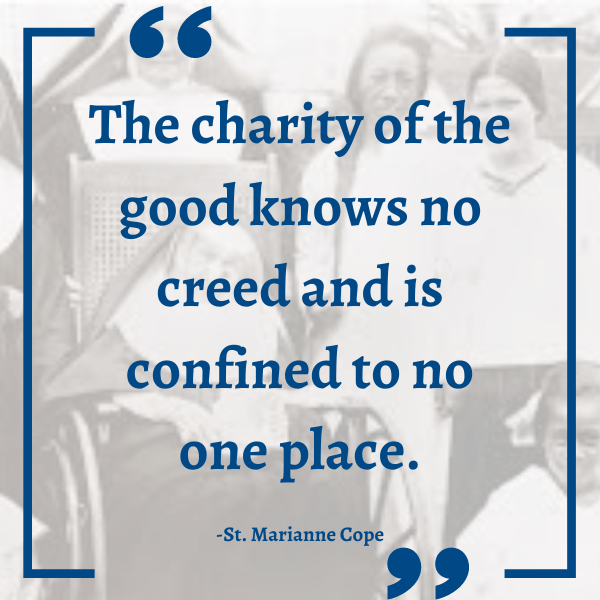
Prayer to
St. Marianne Cope
Lord Jesus,
You who gave us Your commandment of love of God and neighbor and identified Yourself in a special way with the most needy of Your people, hear our prayer.
Faithful to Your teaching, St. Marianne Cope loved and served her neighbor, especially the most desolate outcast,
giving herself generously and heroically for those afflicted by leprosy.
She alleviated their physical and spiritual sufferings,
thus helping them to accept their afflictions with patience.
Her care and concern for others manifested the great love You have for us.
Through her merits and intercession, grant us the favor which we confidently ask of You so that the people of God, following the inspiration of her life and apostolate, may practice charity towards all according to Your word and example.
Amen.
